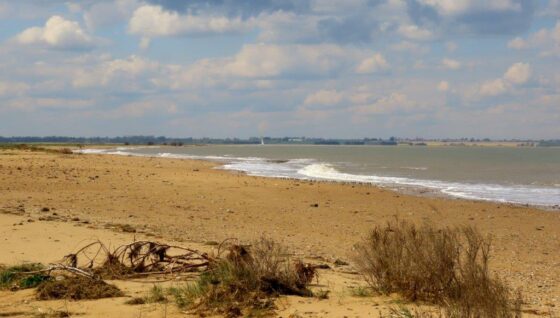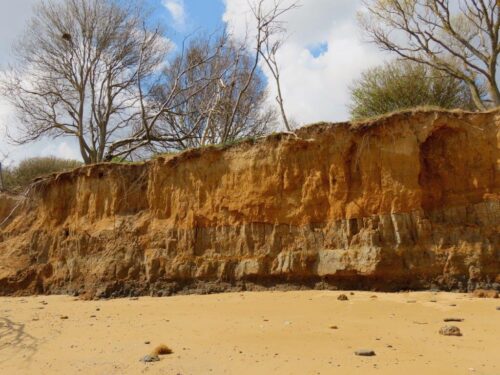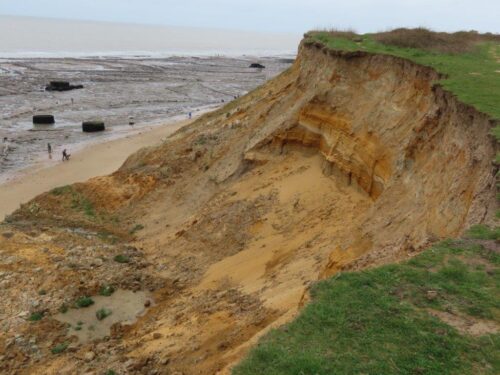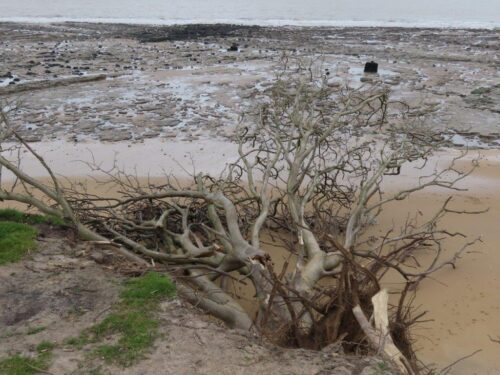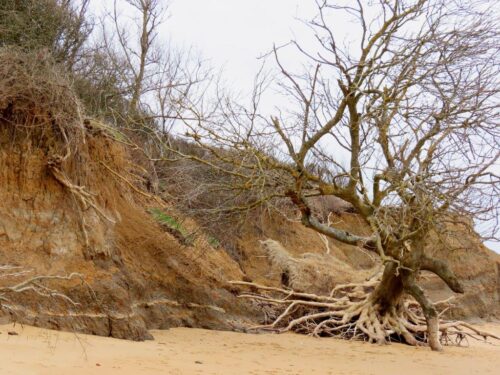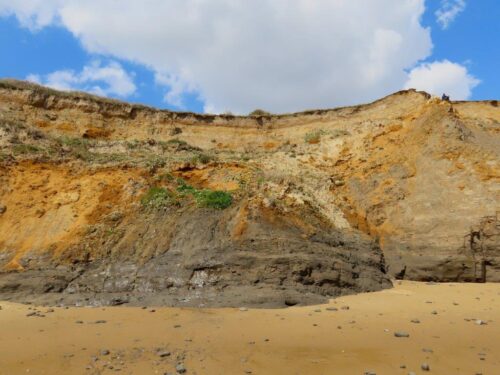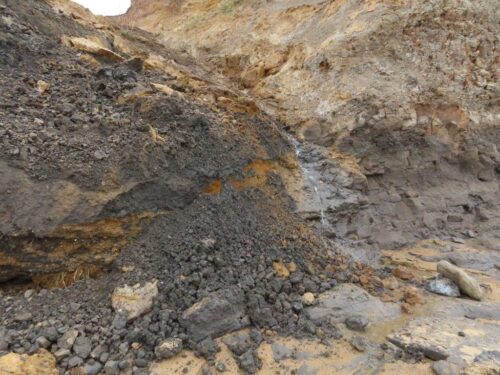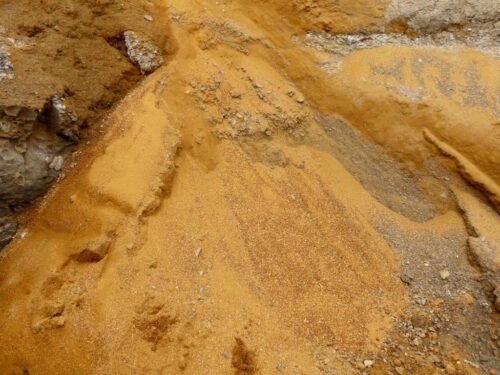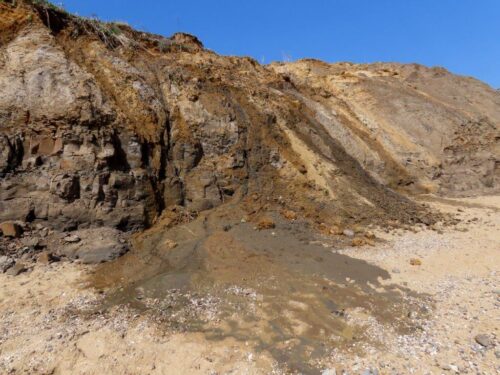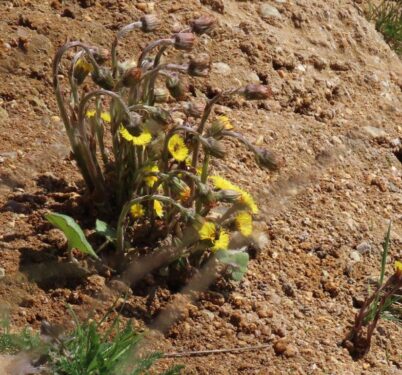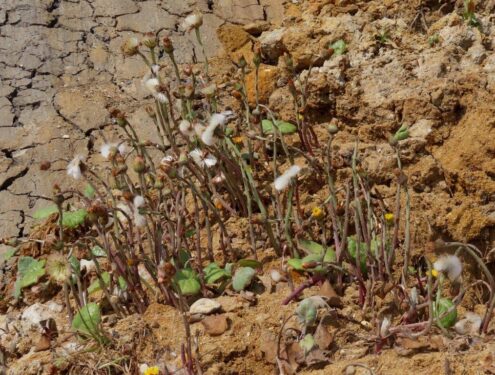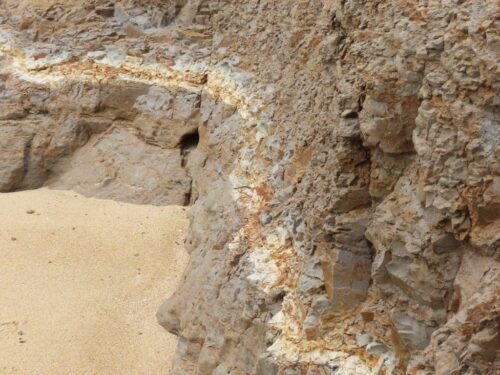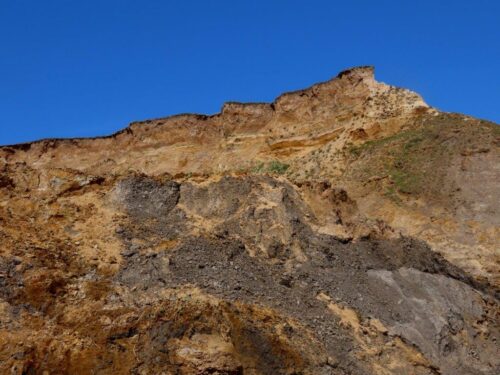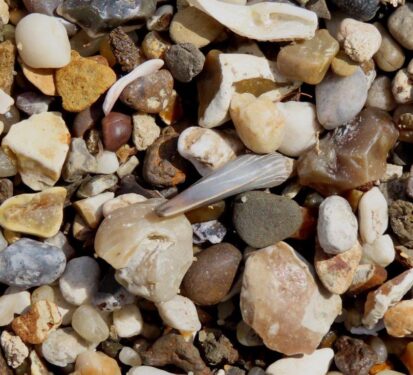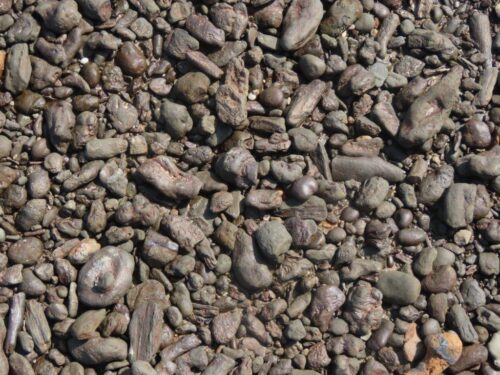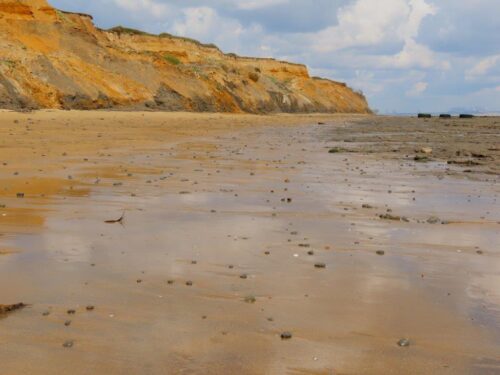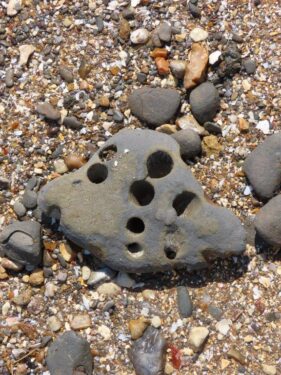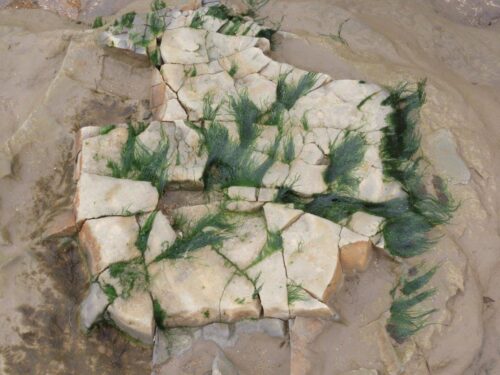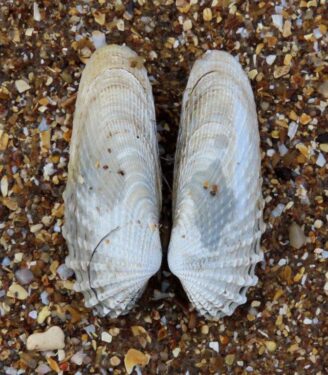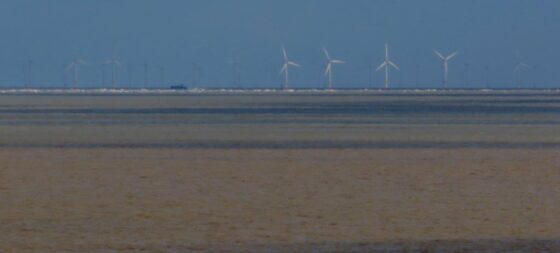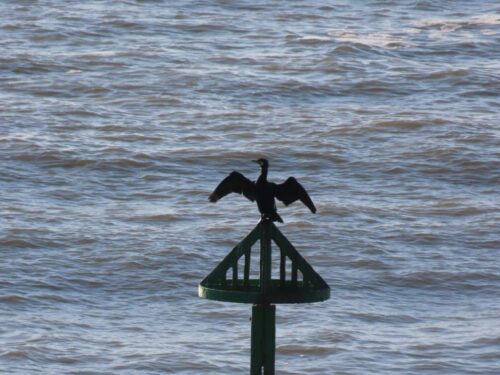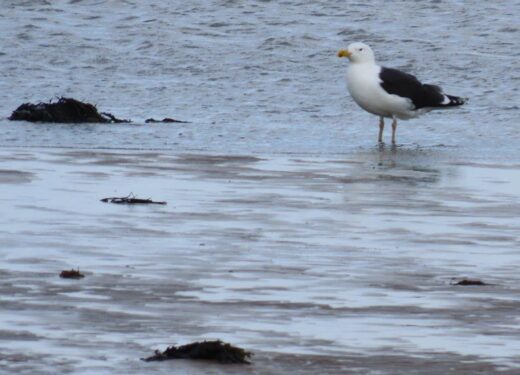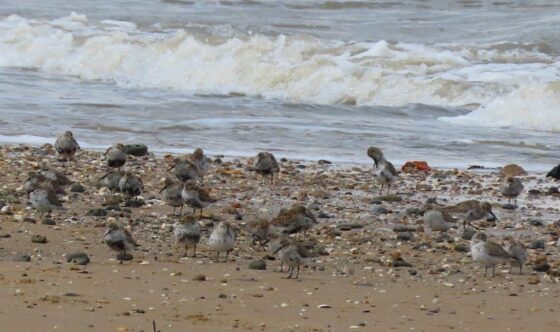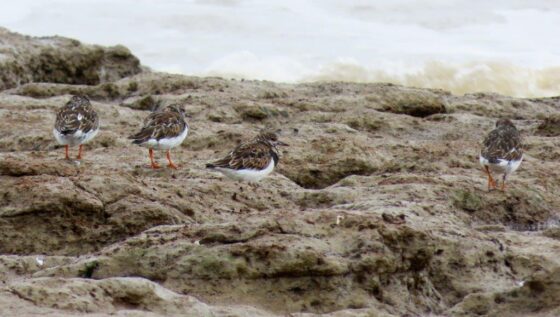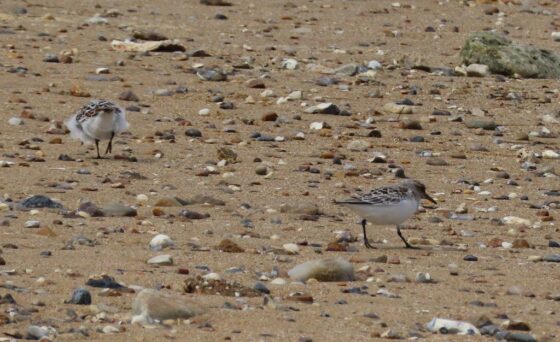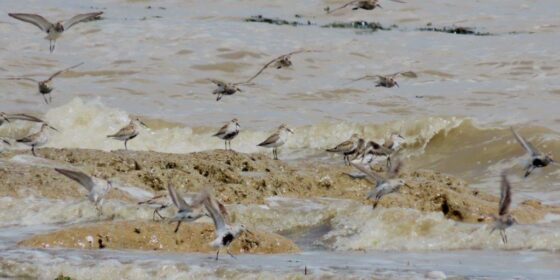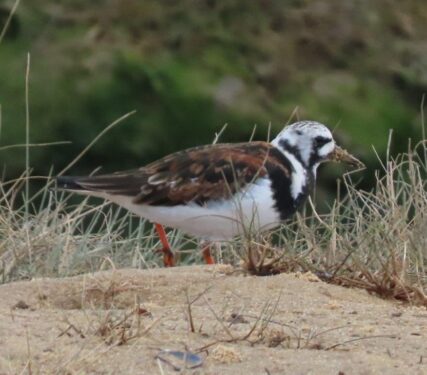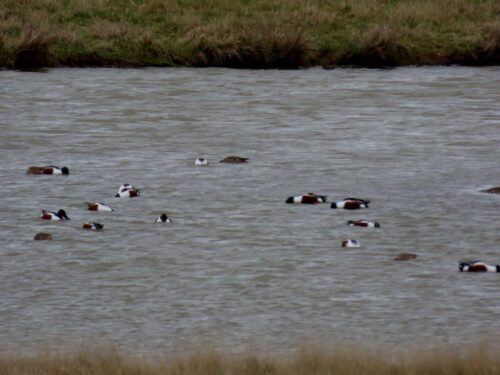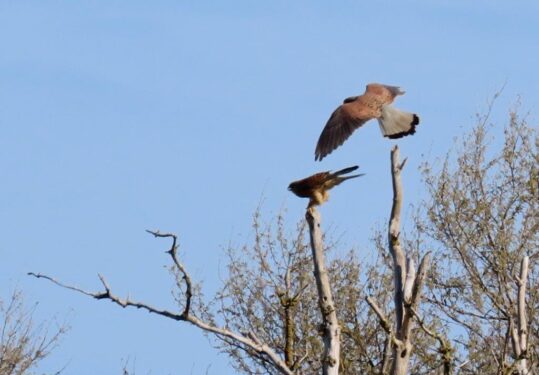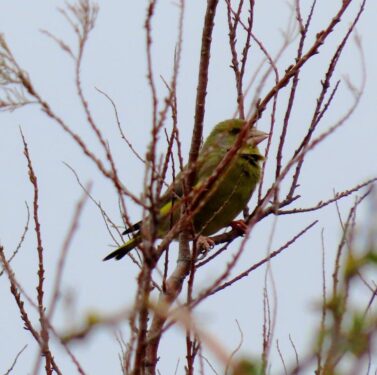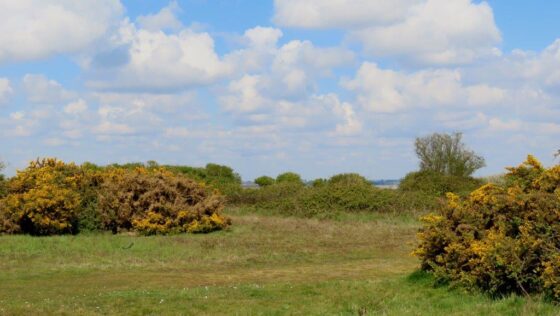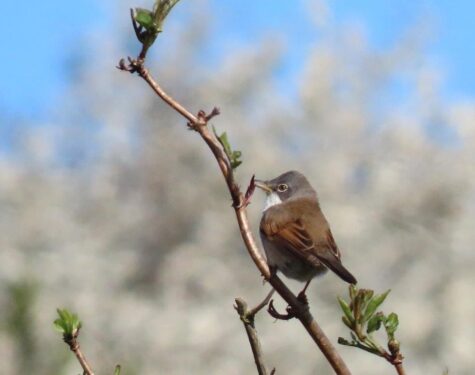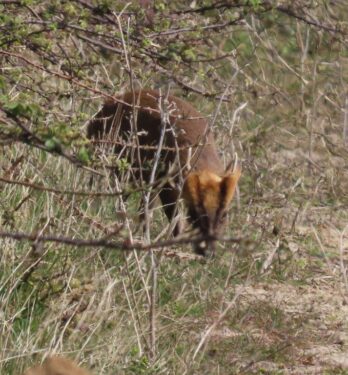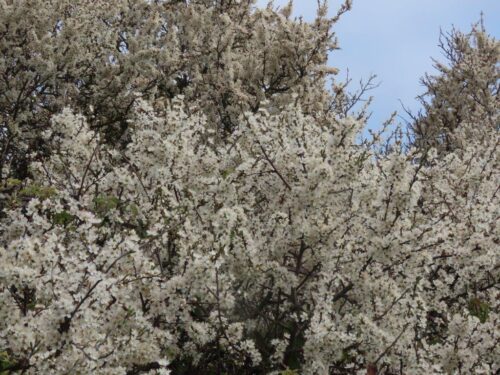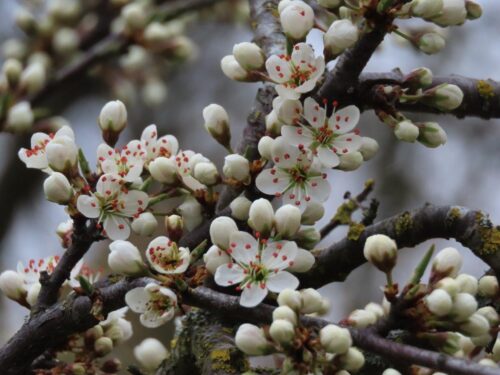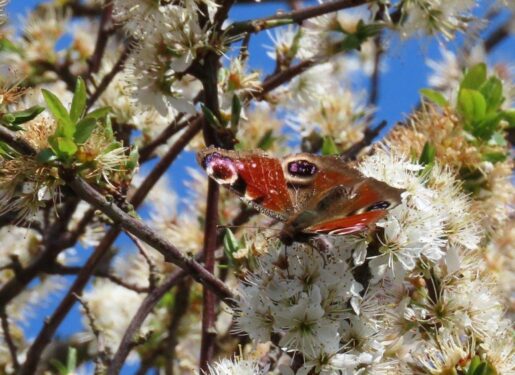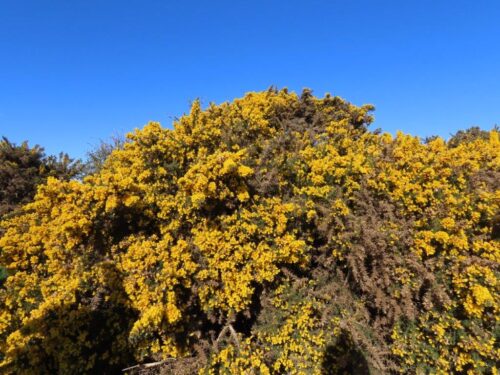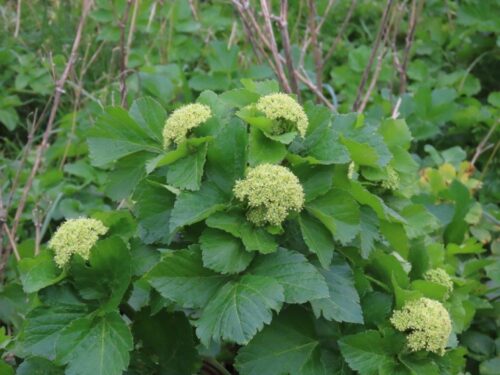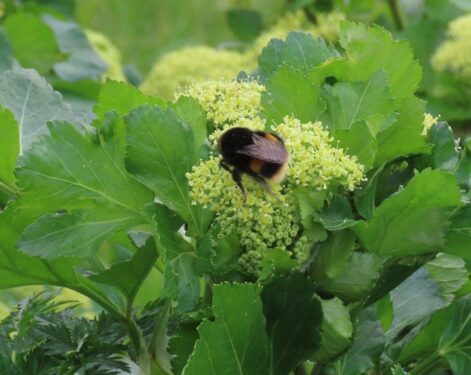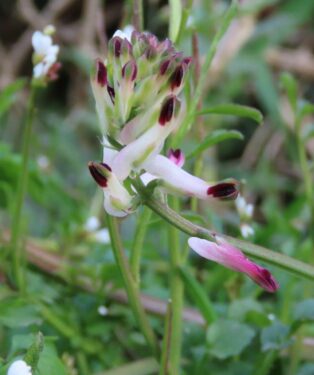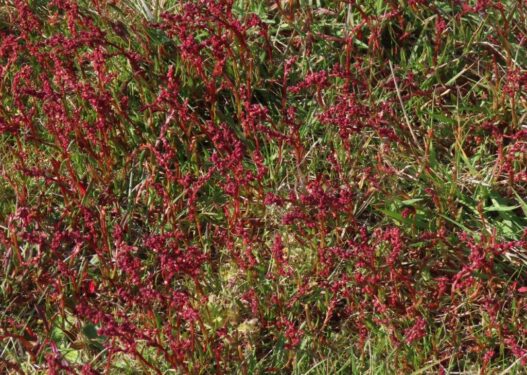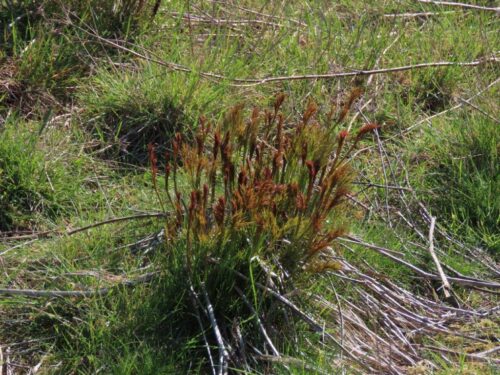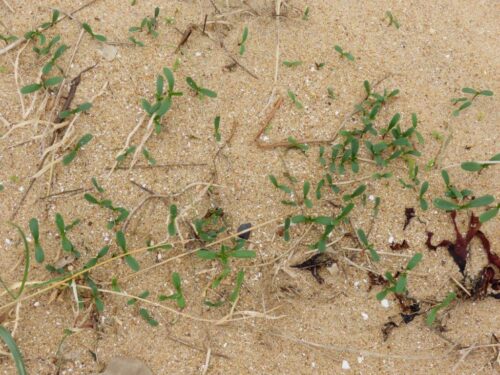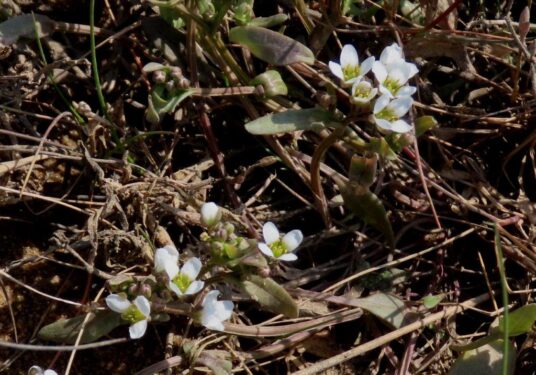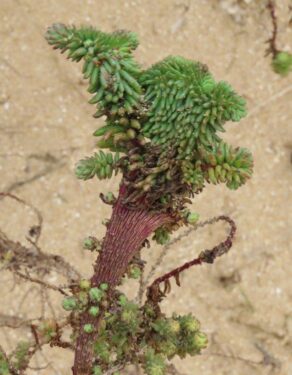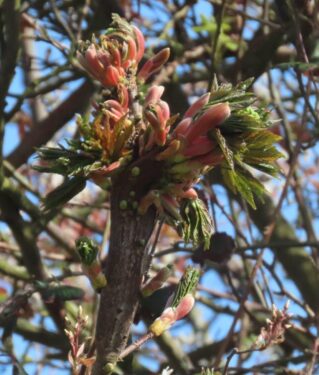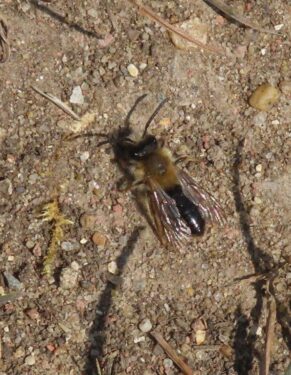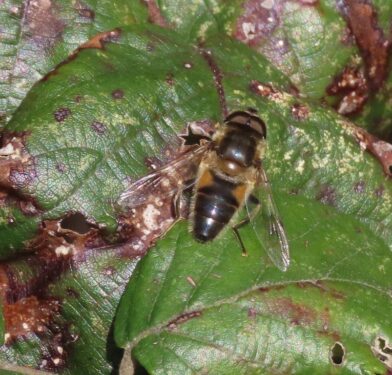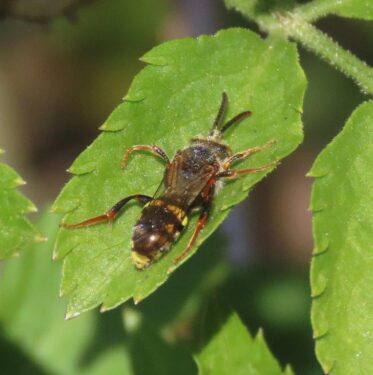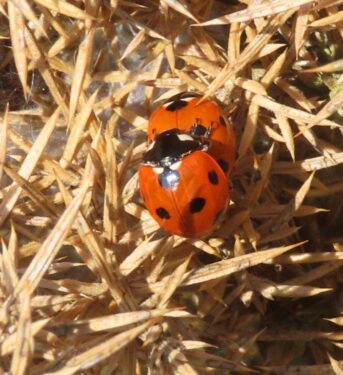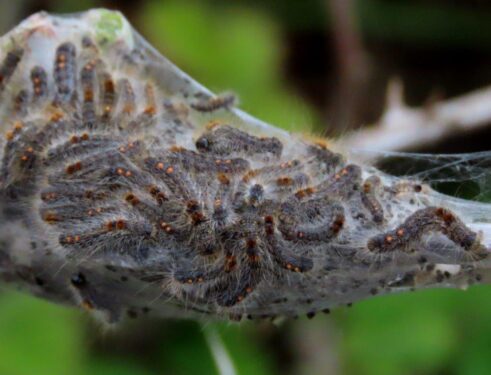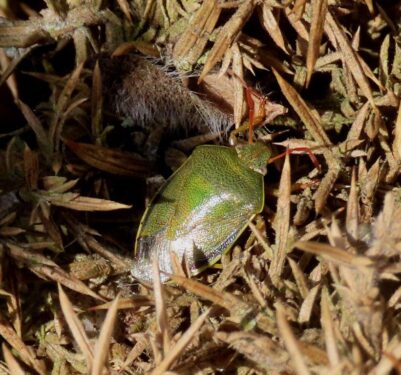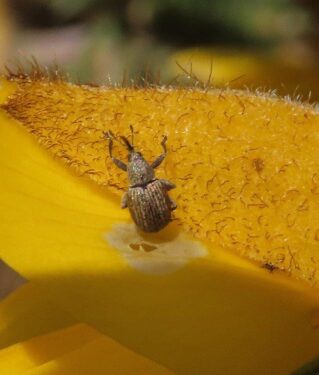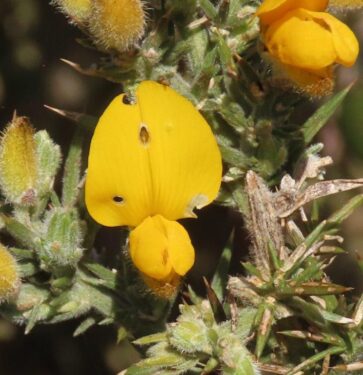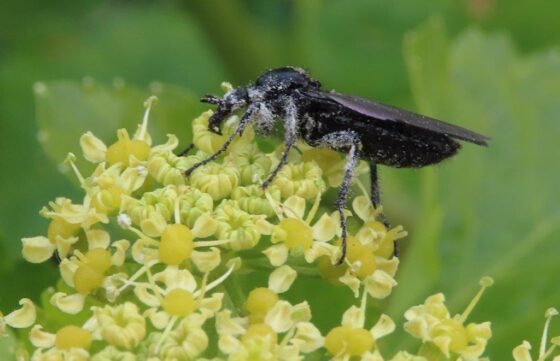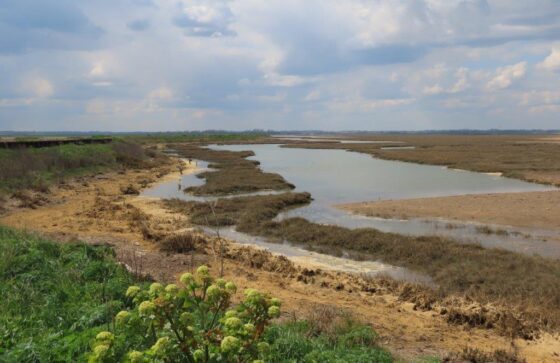After three months’ enforced absence, it was all change at the Naze. Clearly, the winter wet and hefty storms had caused a lot of erosion, with cliff-slips and tree-falls evident during the first of four @Naturetrektours day walks in April.
And even in ‘the month with no rain’, the preceding winter’s deluges kept lubricating the landslips into activity right through the month: #The WildSideofEssex at its best!
The slumping cliffs, naturally disturbed, are the aboriginal home of plants that may be more familiar as followers in the wake of humanity. Colt’s-foot was already in flower, replaced at month’s end by its ‘dandelion-clocks’ and unfurling leaves:
And the erosion has other up-sides too. It provides sand for the beaches downdrift, it creates clean faces for Sand Martin nests and to reveal the geological strata, telling the story from Tertiary times…
… and providing new crops of fossils to be searched for on the beach.
Whether 50 million year-old fossils and septaria to modern flotsam, there’s always something to find. From sharks’ teeth to Angel’s-wings, Alpine upheavals to winter landslips, at the Naze ‘then’ meets ‘now’ and rubs shoulders with ‘the future’ in the month that the contribution of renewables to the UK energy supply exceeded 60%.
And while the sea was very quiet for birds on the days we were there, save for a few Cormorants and gulls, and a single female Eider…
…shorebird numbers actually increased during the month, as Dunlins (up to 500), Sanderlings and Turnstones especially gathered before heading to the Arctic for the summer, by the end of the month many of them moulting into summer plumage.
… while on the marshes the number of Shovelers grew to an impressive 50 early in the month.
Landbirds were rather more difficult to come by in the cold to very cold north-easterly winds which persisted all month. The cliff-top scrub proved a reliable site for wheezing Greenfinches and mating Kestrels, the fields around had displaying Lapwings, and ever-increasing it seems, angrily-singing Cetti’s Warblers, six or seven around the headland.
But summer migrants were mostly seriously held back by adverse winds. Sand Martins, Chiffchaffs and Blackcaps had made it through in March, but the martins all but disappeared until the very last day of the month. Other hirundines did little more than trickle through, and Whitethroats arrived in mid-month, with 15 or more singing on territory when the first Lesser Whitethroats dropped in a week later. Otherwise, it was a merest sprinkling of Yellow Wagtails, Sedge Warblers, Wheatears and Sandwich Terns. There is still much to arrive…
Another increasing species seems to be Muntjac. It is now the norm to see several during a walk, and this is in spite of the huge number of dogs walked over the Naze. The last walk of the month also gave us other mammal records, including Stoat, Weasel and a magnificent bull Grey Seal offshore.
Flowering, by and large, has been held back by the arctic air and night frosts. Take Blackthorn, normally peaking here in late March, at the start of April much of it was still in tight bud. The peak occurred some three weeks later than is usual, and many bushes were still in fine bloom and feeding bumblebees and Peacocks at the end of the month.
Otherwise the main nectar and pollen resources were Gorse, a coconut-scented blaze of colour in the sun, albeit badly frost-scorched in exposed places, and Alexanders, a non-native perhaps but one that pays its way in terms of ecosystem services.
Other plants starting to show were White Ramping Fumitory and Sheep’s Sorrel on the clifftop, Sea Rocket germinating on the dunes, Hog’s Fennel sprouting and the first flush of salt marsh blooming with the emergence of Common Scurvy-grass.
And a final couple of botanical findings, fascinating fasciations, where the shoot tips of Shrubby Sea-blite and Sycamore have both become flattenened and proliferated.
It was a very difficult month for insect-watching. Late emergences and reduced activity meant that only at the hottest times of the day, when the sun was out, and in sheltered spots out of the wind was there much to see, with basking solitary bees, cuckoo-bees, hoverflies and ladybirds.
The Blackthorns were hosting some impressive larval webs of Brown-tail Moths, and the Gorse as always came up with the goods in the form of Gorse Shield-bugs and Gorse Weevils, most noticeable perhaps by the holes they excise in the petals.
And then at last on the final day, an emergence of St Mark’s Flies, behind schedule by some five days: black, hairy and dangly, fearsome-looking perhaps, but entirely harmless, indeed beneficial as food for Swallows and as pollinators.
So, all-in-all an interesting month. A bit of an endurance test at times in the teeth of the wind, but Spring has advanced a little. And as we head into May, the dam-burst of held-back birds and delayed flowerings is surely only days away….
